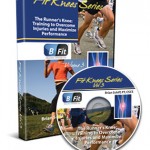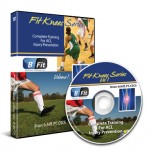Brian Schiff’s Blog
Injury Prevention, Sports Rehab & Performance Training Expert
Unfortunately, too many athletes who recover from ACL tears go on to suffer another injury within a short period of time. Click here to read a prior post on secondary injuries. There are differing opinions on when or if there is an exactly “right time” to clear an athlete for return to play.
We already know that athletes have persistent weakness and asymmetry at 1 year post-op and even beyond. I recently had one of my collegiate soccer players re-tear while helping out with a youth soccer camp. She had not yet done hop testing with me or been cleared for full soccer, but as she was 1 year out she did not think it would be an issue playing with 12 year-old girls. It only took 20 minutes before she suffered a non-contact re-injury and lateral meniscus tear.
Consider the following paper that reveals low rates of patients meeting return to sport (RTS) criteria at 9 months post-op:
https://www.ncbi.nlm.nih.gov/pubmed/29574548
Another paper recent published in the Journal of Sports Rehabilitation revealed marked deficits in balance and hop testing at 6 and 9 months post-op:
https://www.ncbi.nlm.nih.gov/pubmed/29466066
A recent paper in the American Journal of Sports Medicine (https://www.ncbi.nlm.nih.gov/pubmed/29659299) lists positive predictors of a return to knee-strenuous sport 1 year after ACL reconstruction were male sex, younger age, a high preinjury level of physical activity, and the absence of concomitant injuries to the medial collateral ligament and meniscus.
In 2016, research in the American Journal of Sports Medicine revealed delaying return to sport at least 9 months markedly reduced re-injury risk in those who passed RTS testing. Click below for more on that study:
https://www.ncbi.nlm.nih.gov/pubmed/27162233
So, where are we now? I employ multiple functional tests including the Y-Balance Test, FMS, single leg squatting, hand held dynamometry, hop testing, qualitative movement assessment and jump landing assessments. But, is that enough?
Today through the end of Memorial Day I am offering 50% off my entire product line of e-books and DVDs on my website. So if you or your friends and colleagues are looking for information on rotator cuff pain, frozen shoulder treatment, ACL prevention, or programs to eliminate knee pain in runners or those with osteoarthritis, now is the time to grab one of my guides.
Visit http://www.brianschiff.com/Products.asp to see my catalog of products and simply enter the code BFIT50 in the coupon box at checkout. The sale will end Monday at midnight.
Blood flow restriction (BFR) therapy/training is one of the newer and more exciting techniques being used in the sports medicine field. I received training with Owens Recovery Science and have been utilizing personalized blood flow restriction (PBFR) therapy in my clinic since November 2017 using the Delfi personalized tourniquet system (PTS).
What exactly is BFR?
It is the application of a specialized tourniquet system to the proximal arm or leg, which is inflated to a personalized and specific pressure to reduce blood flow to an exercising extremity. For the lower extremity, the occlusion pressure is 80%, whereas the upper extremity pressure is usually set at 50%.
The application is brief and intermittent, usually lasting about 6 minutes per exercise. For most clients, a total of 3-4 exercises are used leading to 24-30 minutes based on the specific exercises prescribed. Typically, to increase strength and hypertrophy a person would need to lift a significant amount of weight (greater than or equal to 60% of a 1 repetition maximum). With PBFR you can create significant strength and hypertrophy gains with loads as low as 20% 1RM.
We utilize the Delfi tourniquets as suggested with the Owens training course. You can see the PTS and tourniquets below:
What is the science behind this training tool?
The landmark study by Takarada published in 2000 revealed that significant hypertrophy gains are seen with occlusion and the use of lighter training loads. There is an increase in muscle protein synthesis as well as growth hormone secretion. Below you find some links to abstracts from Takarada’s work:
https://www.ncbi.nlm.nih.gov/pubmed/10846023
https://www.ncbi.nlm.nih.gov/pubmed/10642363
https://www.ncbi.nlm.nih.gov/pubmed/11128848
In addition to hypertrophy, there also appears to be an application for preventing disuse atrophy simply using occlusion. This may prove very beneficial for clients who are non-weightbearing after an injury or surgery, yet not able to perform much resistance training.
Poor landing mechanics are often cited as a predictor of ACL injury risk. In my 20 years as a physical therapist, I have rehabbed many athletes with this injury. I believe that injury prevention, whether to prevent a primary or secondary injury, hinges on the ability to train the body to decelerate and land appropriately. Some athletes simply move better than others. Nonetheless, teaching a soft bent knee landing while minimizing dynamic valgus is essential.
The following video from my online PFP column reveals a foundational exercise that can be used in prevention and rehab alike.
Click here if you want to read about another landing exercise that I utilize in my training and rehab programs.
Unfortunately, I see far too many patients following ACL reconstruction in my sports medicine practice. In any given month, I am rehabbing between 10 and 15 patients who have lost their season to this injury. Most of the time it is a non-contact mechanism of injury, often involving additional trauma to the collateral ligaments, menisci and/or cartilage within the joint.
Throughout my career, I have rehabbed several hundred athletes with ACL tears. It has always been an area of interest and passion for me as well as prevention. Blending my background in performance training with rehab, I have fostered through much trial and adjustment what seems to be a very effective approach to rehab and return to sport. Rehabbing higher level athletes is much like working on a high performance sports cars.
If you own a high performance vehicle, you would prefer to have it serviced at a dealership where the mechanics are experienced working on similar cars, yes? I feel the same care and application is relevant with ACL rehab. PT that is too aggressive or too conservative can impede progress and negatively impact peak performance.





